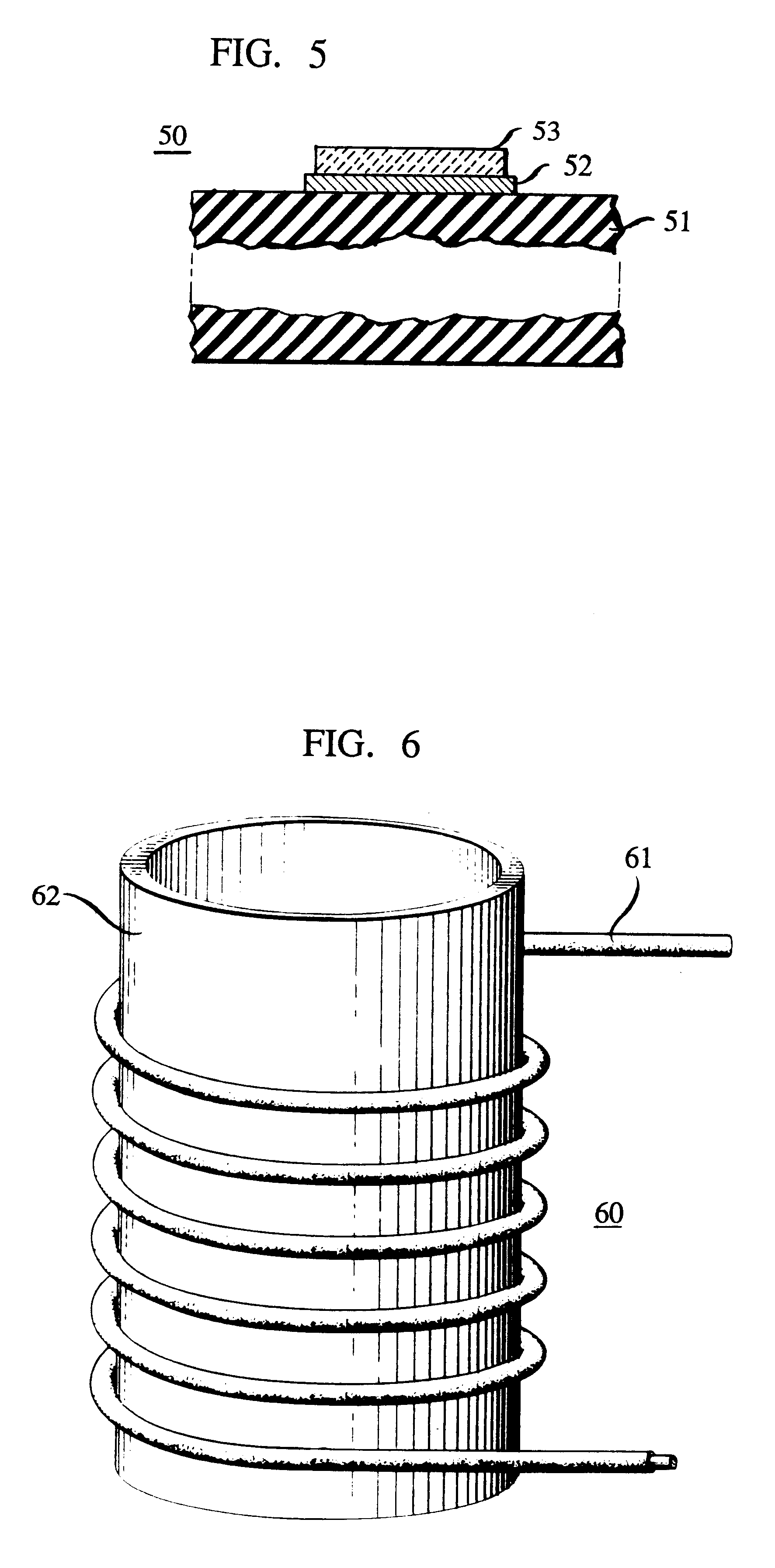Method of making a superconductive oxide body
a superconductive and oxide body technology, applied in the field of making superconductive oxide bodies, can solve the problems of relatively low electrical and thermal conductivity, relatively brittle and mechanically weak oxide superconductive bodies, etc., and achieve the effect of increasing normal state electrical conductivity and reducing fracture load or toughness
- Summary
- Abstract
- Description
- Claims
- Application Information
AI Technical Summary
Benefits of technology
Problems solved by technology
Method used
Image
Examples
example ii
(Ba, Y) cuprate powder is produced as described in Example I, mixed with Ag powder and a commercially available acrylic binder in 1, 1, 1 trichloroethane solvent (Cladan No. 73140 obtained from Cladan Inc., San Marcos, Calif.) to yield a volume ratio of 50% superconductor, 10% silver, 40% binder.
The thus produced slurry is poured into the reservoir of a doctor blade tape caster, with a gap 7.6 cm wide and 0.71 mm high. The slurry is cast in conventional fashion onto a PTFE-coated plate by moving the casting head cross 1.8 m of the plate at 1.8 cm / sec. The resulting strip of slurry is dried for 16 hours in air, yielding a flexible tape 112 .mu.m thick and about 7.6 cm wide. A portion of the flexible tape is placed on a ZrO.sub.2 substrate, covered with low density Al.sub.2 O.sub.3 sheet that is coated with ZrO.sub.2, and placed in a conventional muffle furnace. The tape is heated to 400.degree. C. in 12 hours and held at that temperature for 12 hours in O.sub.2. This results in subst...
example iii
A screen printing ink is prepared by mixing cuprate powder, silver particles and binder substantially as described in Example II, except that the binder is a solution of ethylene cellulose binder in turpineol, and the volume ratio of binder, cuprate powder, and silver particles is about 30 / 25 / 5. The ink is screen printed in conventional manner onto a 1 .mu.m thick Ag layer on a fused quartz substrate. The combination is heat treated substantially as described in Example I. The resulting superconductive body adheres strongly to the substrate, has T.sub.c of about 93 K, and normal state resistivity substantially lower than a corresponding metal-free superconductive body.
example iv
Superconductive strips are prepared substantially as described in Example I, except that the metal particles are Ag-coated Ni flakes (approximately 1.times.10 .mu.m Ni flakes, 0.5 .mu.m coating thickness, coated by a known electroless process), and the strips are sintered at 900.degree. C. for two hours, followed by slow (6 hours) cooling to 200.degree. C. The properties of the resulting superconductive strips are substantially as described in Example I.
PUM
| Property | Measurement | Unit |
|---|---|---|
| Temperature | aaaaa | aaaaa |
| Angle | aaaaa | aaaaa |
| Angle | aaaaa | aaaaa |
Abstract
Description
Claims
Application Information
 Login to View More
Login to View More - R&D
- Intellectual Property
- Life Sciences
- Materials
- Tech Scout
- Unparalleled Data Quality
- Higher Quality Content
- 60% Fewer Hallucinations
Browse by: Latest US Patents, China's latest patents, Technical Efficacy Thesaurus, Application Domain, Technology Topic, Popular Technical Reports.
© 2025 PatSnap. All rights reserved.Legal|Privacy policy|Modern Slavery Act Transparency Statement|Sitemap|About US| Contact US: help@patsnap.com



